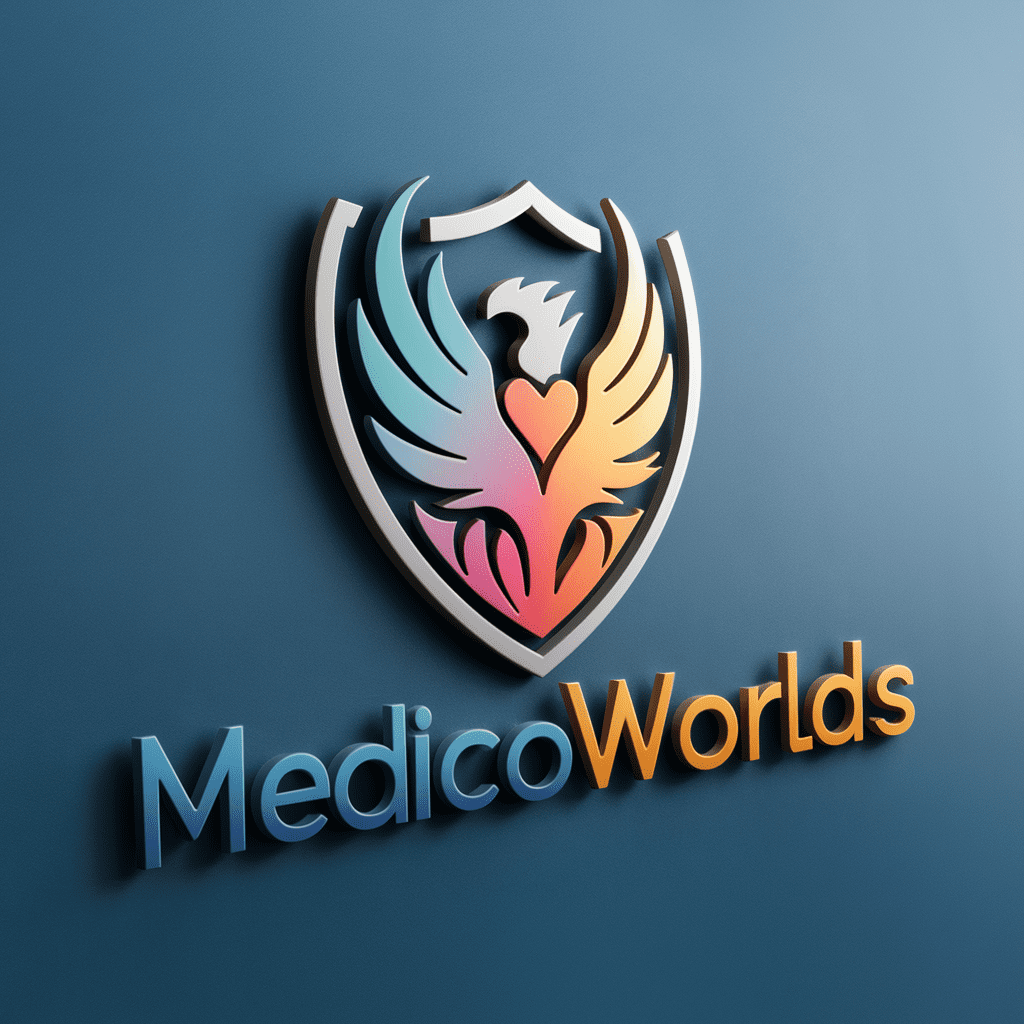Overview
Alcohol Use Disorder ICD 10 is more than just a casual indulgence; it’s a pattern of drinking that can lead to serious problems. This disorder encompasses a range of issues, from struggling to control your drinking to being fixated on alcohol, even when it causes harm. If you find yourself needing more alcohol to achieve the same effect or experiencing withdrawal symptoms when cutting back, it may be a sign of Alcohol Use Disorder ICD 10.

But alcohol-related concerns don’t end there. Unhealthy alcohol use goes beyond the boundaries of casual drinking, posing risks to your well-being and safety. One such pattern is binge drinking, where males consume five or more drinks within two hours, or females have at least four drinks within the same timeframe. Unfortunately, binge drinking carries significant health and safety hazards.
The impact of Alcohol Use Disorder ICD 10 goes deeper, affecting various aspects of your life. If your drinking habits lead to frequent distress and impair your daily functioning, you might be grappling with Alcohol Use Disorder ICD 10. The severity can range from mild to severe, with even mild cases having the potential to escalate into more serious issues. As such, seeking early treatment is crucial to address the situation effectively.
In conclusion, understanding Alcohol Use Disorder ICD 10 and its potential consequences is paramount for safeguarding your health and well-being. Don’t let this pattern of drinking take control of your life. If you or someone you know is facing these challenges, seeking professional help and support can make a significant difference in reclaiming a healthier, happier future. Remember, taking action now can prevent the situation from worsening and pave the way for a better tomorrow.
Symptoms
Alcohol misuse syndrome can manifest as a mild, moderate, or severe condition, dependent on the array of symptoms exhibited. Manifestations and indications may comprise:
- Experiencing an incapability to restrict the quantity of alcohol consumed.
- Aspiring to diminish alcohol intake, accompanied by fruitless endeavors in achieving this goal.
- Devoting substantial time to consuming alcohol, procuring it, or convalescing from its effects.
- Experiencing an intense, compelling craving or urge for alcohol consumption.
- Failing to fulfill crucial responsibilities at the workplace, school, or home due to repetitive alcohol utilization.
- Persisting in alcohol consumption despite being cognizant of its detrimental impact on physical, social, professional, or relational aspects.
- Sacrificing or curtailing social engagements, work-related endeavors, and hobbies in favor of indulging in alcohol consumption.
- Partaking in alcohol consumption during unsafe situations, such as driving or swimming.
- Developing an increased tolerance to alcohol, necessitating larger quantities to perceive its effects or experiencing diminished impact from the same measure.
- Encountering withdrawal symptoms—such as nausea, perspiration, and trembling—upon abstaining from alcohol or consuming it to avert these distressing effects.
Alcohol misuse syndrome encompasses periods of intoxication and symptoms of withdrawal.
- Alcohol inebriation ensues as the concentration of alcohol escalates within your bloodstream. Heightened blood alcohol levels correlate with an augmented likelihood of adverse consequences. Behavioral disturbances and cognitive alterations are common occurrences during alcohol inebriation. These may encompass improper conduct, fluctuating emotional states, impaired decision-making abilities, slurred speech, difficulties with focus or recall, and compromised motor coordination. Episodic memory lapses, known as “blackouts,” may also transpire, leading to an absence of recollection of specific events. When blood alcohol levels soar to exceedingly high levels, the consequences can be severe, including comatose states, lasting brain impairment, and even fatality.
- Alcohol discontinuation syndrome may arise following prolonged and substantial alcohol consumption, followed by abrupt cessation or significant reduction. Its manifestation can transpire within a few hours or up to 4 to 5 days thereafter. Indications and manifestations encompass perspiration, accelerated heartbeat, trembling hands, sleep disturbances, queasiness, and retching, vivid hallucinations, feelings of restlessness and agitation, anxiety, and sporadic seizure occurrences. The severity of symptoms may reach a level that hampers an individual’s capacity to function effectively at the workplace or during social interactions.
What is considered 1 drink?
The National Institute on Alcohol Abuse and Alcoholism has precisely defined a singular standard drink as being constituted by any one of the following:
- Approximately 12 fluid ounces, equivalent to 355 milliliters, of conventional beer, boasting an alcohol content of approximately 5%.
- Approximately 8 to 9 fluid ounces, which translates to 237 to 266 milliliters, of malt liquor, boasting an alcohol content of approximately 7%.
- Approximately 5 fluid ounces, equivalent to 148 milliliters, of wine, boasting an alcohol content of approximately 12%.
- Roughly 1.5 ounces, equivalent to 44 milliliters, of hard liquor or distilled spirits, boasting an alcohol content of approximately 40%.
When to see a doctor
If you find yourself imbibing copious amounts of alcohol or if your drinking habits have become a source of concern or trouble, it is prudent to consult your healthcare professional. Additional avenues for assistance encompass seeking guidance from a mental health expert or turning to support groups like Alcoholics Anonymous or analogous self-help collectives.
It is worth noting that denial is not uncommon in such circumstances, potentially leading to a lack of recognition concerning the extent of alcohol consumption and its impact on various aspects of life. In such instances, it may be beneficial to lend an ear to the insights of family members, friends, or colleagues who implore you to introspect on your drinking patterns and consider seeking support. Conversing with someone who has previously encountered drinking-related challenges but has successfully overcome them could also offer valuable perspectives.
If your loved one needs help
Innumerable individuals grappling with alcohol use disorder often find themselves reluctant to seek treatment, as they may remain oblivious to the existence of a predicament. In such cases, the caring intervention of family and friends can play a pivotal role in helping them realize and acknowledge the necessity for professional assistance. Should you harbor concerns about someone with excessive alcohol consumption, it would be wise to consult an experienced alcohol treatment specialist to receive guidance on the most effective approach to address the matter.
Causes
A multifaceted interplay of genetic, psychological, social, and environmental factors can exert diverse influences on the effects of alcohol consumption on both the body and behavior. Hypotheses posit that certain individuals may experience a distinct and more potent impact from drinking, which could potentially culminate in the development of alcohol use disorder.
Prolonged and excessive alcohol intake may gradually alter the normal functioning of specific brain regions associated with the sensations of pleasure, sound judgment, and the ability to regulate one’s actions. As a consequence, an individual might find themselves driven to crave alcohol in a bid to rekindle positive emotions or alleviate negative ones.
Risk factors
While the initiation of alcohol use may commence during adolescence, it is in the realms of the 20s and 30s that Alcohol Use Disorder ICD 10 is more prevalent, though it can manifest at any stage of life.
Factors that contribute to the likelihood of alcohol use disorder are as follows:
- Steady drinking over time. Indulging in excessive alcohol consumption consistently over an extended duration or engaging in regular episodes of binge drinking can give rise to alcohol-related complications or alcohol use disorder.
-
Starting at an early age. Individuals who initiate alcohol consumption—particularly indulging in binge drinking—during their early years face an elevated susceptibility to the development of Alcohol Use Disorder ICD 10.
- Family history. Individuals with a family history of alcohol-related issues, particularly those with a parent or close relative facing such challenges, exhibit a heightened vulnerability to the development of Alcohol Use Disorder ICD 10, possibly due to underlying genetic factors.
- Depression and other mental health problems. Individuals grappling with mental health conditions such as anxiety, depression, schizophrenia, or bipolar disorder often encounter challenges related to alcohol or other substances.
- History of trauma. Individuals who have experienced emotional trauma or other forms of trauma are at an elevated susceptibility to develop alcohol use disorder.
- Having bariatric surgery. Certain research investigations suggest that undergoing bariatric surgery could potentially elevate the likelihood of developing alcohol use disorder or experiencing relapse following recovery from alcohol use disorder.
- Social and cultural factors. The presence of companions or an intimate partner who partakes in regular drinking could augment the likelihood of developing an Alcohol Use Disorder ICD 10. The alluring manner in which alcohol consumption is sometimes depicted in the media may also convey the message that excessive drinking is acceptable. In the case of young individuals, the influence of parents, peers, and other role models may significantly impact the level of risk involved.
Complications
Alcohol exerts a depressant effect on your central nervous system. In certain individuals, the initial response might resemble heightened energy, but as drinking persists, drowsiness ensues, leading to diminished control over actions.
Excessive alcohol consumption adversely affects speech, muscle coordination, and crucial centers within the brain. Engaging in a heavy drinking spree may even precipitate a life-threatening coma or demise. This becomes a particular concern when combined with specific medications that also depress the brain’s function.
Impact on your safety
Indulging in immoderate alcohol consumption has the potential to impair your cognitive faculties, diminish your capacity for sound judgment, and weaken inhibitory mechanisms. This can result in making unwise decisions and engaging in hazardous situations or behaviors, encompassing a myriad of undesirable consequences:
- The realm of potential accidents is vast and varied, encompassing motor vehicle mishaps, as well as other unforeseen injuries, like drowning in bodies of water.
- Within the intricate web of human interactions, lie the complexities of relationship issues, where emotions intertwine and challenges arise.
- In the realm of academia and the professional world, the struggles of underachievement may manifest, impacting one’s career or educational journey.
- The possibility of becoming entangled in acts of violence or becoming a victim of such acts rises significantly.
- Encounters with legal entanglements or issues related to employment or finances.
- Challenges about the utilization of other substances.
- Partaking in perilous, unprotected intimate relations, or undergoing sexual mistreatment or data violation.
- Heightened jeopardy of endeavoring or accomplishing self-destruction.
Impact on your health
- The act of excessive alcohol consumption, either on a singular occasion or prolonged over time, can give rise to various health complications, encompassing:
- Liver disease. Excessive consumption of alcoholic beverages can lead to a surge in adipose deposits within the liver, known as hepatic steatosis, and provoke inflammation of the liver, termed alcoholic hepatitis. With time, such heavy drinking may cause irreversible damage and fibrous scarring of the liver tissue, a condition referred to as cirrhosis.
- Digestive problems. Excessive alcohol consumption may lead to gastritis, an inflammation of the stomach lining, and can cause the development of stomach and esophageal ulcers. Moreover, it can impede the body’s capacity to obtain an adequate supply of essential B vitamins and other crucial nutrients. Furthermore, heavy drinking has the potential to harm the pancreas or induce inflammation of the pancreas, also known as pancreatitis.
-
Heart problems. Indulging in excessive alcohol consumption may result in elevated blood pressure and elevate the likelihood of developing an enlarged heart, heart failure, or stroke. Even engaging in a solitary bout of heavy drinking, known as binge drinking, can lead to severe irregular heartbeats, specifically a condition called atrial fibrillation.
- Diabetes complications. The consumption of alcohol can disrupt the liver’s release of glucose and heighten the likelihood of experiencing low blood sugar levels, also known as hypoglycemia. For individuals with diabetes who are already taking insulin or other diabetes medications to regulate their blood sugar, this poses a significant risk.
- Issues with sexual function and periods. Engaging in excessive alcohol consumption can lead to sexual complications for men, such as difficulties in maintaining an erection, commonly known as erectile dysfunction. Additionally, women who indulge in heavy drinking may experience disruptions in their menstrual periods.
-
Eye problems. Engaging in prolonged and excessive alcohol consumption can have various adverse effects on your body. It can lead to involuntary rapid eye movements, a condition known as nystagmus, and weaken the eye muscles, possibly causing paralysis. These issues arise due to a deficiency of vitamin B-1, also known as thiamin. Furthermore, a thiamin deficiency may trigger other changes in the brain, potentially leading to irreversible dementia if left untreated.
- Birth defects. Engaging in alcohol consumption while pregnant can lead to the tragic outcome of miscarriage. Furthermore, it has the potential to give rise to fetal alcohol spectrum disorders (FASDs). These disorders can result in the birth of a child with enduring physical and developmental issues, persisting throughout their entire lifetime. It is crucial to emphasize the importance of avoiding alcohol during pregnancy to safeguard both the mother’s well-being and the long-term health of the child.
- Bone damage. The consumption of alcohol has the potential to disrupt the process of bone regeneration, leading to bone loss and the development of osteoporosis, a condition characterized by thinning bones and an increased susceptibility to fractures. Moreover, alcohol can inflict harm on the bone marrow, the vital organ responsible for producing blood cells. As a consequence, a decreased platelet count may occur, resulting in a higher likelihood of experiencing bruising and bleeding. The detrimental impact of alcohol on bone health highlights the importance of exercising moderation and prudence in its consumption to safeguard our overall well-being.
- Neurological complications. Indulging in excessive alcohol consumption can exert adverse effects on your nervous system, giving rise to sensations of numbness and pain in your extremities, leading to disordered thought processes, the onset of dementia, and impairing short-term memory retention. The intricate interplay between the intricate neural network and the alcohol compounds can yield a perplexing array of symptoms that extend beyond the mere physical realm. The potential ramifications of heavy drinking on cognitive faculties emphasize the gravity of being mindful and circumspect in our approach towards alcohol consumption, safeguarding our mental faculties for the long haul.
-
Weakened immune system. Indulging in alcohol to excess can severely impair your body’s ability to mount a robust defense against various diseases, rendering you more susceptible to a myriad of illnesses, with pneumonia looming as a particularly formidable threat. The intricate interplay between excessive alcohol consumption and the body’s immune system creates a complex web of vulnerability, underscoring the paramount importance of exercising moderation and prudence in our approach to alcohol intake.
- Increased risk of cancer. Prolonged and immoderate alcohol consumption has been associated with an elevated incidence of numerous malignancies, encompassing those affecting the oral cavity, pharynx, liver, esophagus, colon, and breast. Even what might be deemed as modest drinking has been shown to augment the susceptibility to breast cancer, adding yet another cautionary note to the profound and intricate relationship between alcohol and health. The entangled web of alcohol’s impact on cancer risk warrants prudent reflection on our drinking habits to safeguard our well-being in the long run.
- Medication and alcohol interactions. The intricate dance between certain medications and alcohol can yield amplified toxic ramifications. Imbibing while under the influence of these medications can either augment or diminish their efficacy, rendering them potentially hazardous. It is of paramount importance to recognize these intricate interplays, as they have the potential to sway the balance between therapeutic benefits and perilous consequences.
Prevention
- In the realm of adolescence, timely and proactive measures bear the potential to avert adversities stemming from alcohol-related issues. For those entrusted with the care of teenagers, vigilance is paramount in detecting subtle signs and symptoms that may hint at an underlying predicament with alcohol. Stay attuned to the intricacies of their behavior and well-being, as they may hold the key to safeguarding their future:
- A waning enthusiasm for once-cherished activities and personal presentations can manifest as subtle indications of an inner transformation. When passions and self-care begin to dwindle, it may be a harbinger of deeper shifts within one’s being, warranting attention and consideration.
- The telltale signs of crimson eyes, the staggered articulation, the challenges in coordination, and the occasional memory lapses – all may indicate an intricate tapestry of underlying elements weaving together in a delicate dance of complexities.
- The intricacies of social connections, fraught with changes and challenges, may lead one to traverse the unfamiliar terrain of forging bonds with new companions, thereby forming a new crowd of acquaintances.
- Academic performance taking a downturn and encountering issues within the educational environment.
- Regular shifts in mood and a tendency to display defensive behavior.
You can help prevent teenage alcohol use:
- Lead by setting a positive precedent through your alcohol consumption.
- Engage in open communication with your child, dedicate quality time to each other, and actively participate in your child’s life.
- Communicate clearly with your child about the expected behavior and the consequences that will ensue if the rules are not followed.
https://en.wikipedia.org/wiki/Alcohol_abuse






